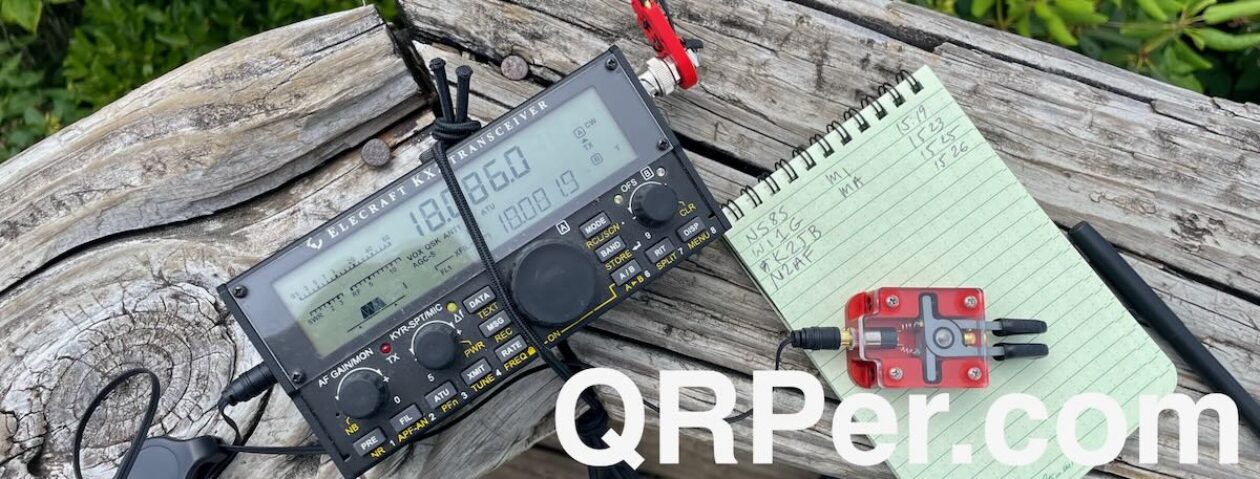 I try to start each year by doing a POTA or SOTA activation on New Year’s Day.
I try to start each year by doing a POTA or SOTA activation on New Year’s Day.
POTA actually issues a certificate for completing an activation on New Year’s Day so there are typically loads of activators and hunters working the bands. It’s an ideal time to play radio.
This year, we had a number of family activities on New Year’s Day, but I made a little time to fit in an activation during the late afternoon at my most accessible spot on the Blue Ridge Parkway: the Southern Highland Folk Art Center.
As with my last activation, I suspected I would be operating in the dark, so I brought my LED lantern along for the ride.
Although not intentional, this New Year activation had a lot of new-to-me stuff involved!
New VK3IL Pressure Paddle
The prior evening–on New Year’s Eve–while my wife and daughters were watching a classic movie movie marathon, I used the time to heat up the soldering iron and work through a few kits and projects that had been sitting on my desk.
One of those projects was a Pressure Paddle designed by David (VK3IL).
Michael (G0POT) sent me the Pressure Paddle circuit board and heat shrink via Andy (G7UHN) several months prior. [Thank you so much, fellas!]
To my knowledge, the VK3IL Pressure Paddle isn’t available in complete kit package, but it’s quite easy to source everything yourself.
On his website, David provides the Gerber files you’ll need in order to purchase the circuit boards from your favorite manufacturer (I’m a huge fan of OshPark here in the States).
Next, you simply need to order the components. Here’s the list assuming you’re using DigiKey:
- Quantity of 2: 732-7579-1-ND (CAP CER 10000PF 10V C0G/NP0 0805)
- Quantity of 2: BSS806NH6327XTSA1CT-ND (MOSFET N-CH 20V 2.3A SOT23-3)
- Quantity of 2: 311-470KCRCT-ND (RES 470K OHM 1% 1/8W 0805)
- Quantity of 2: 1738-SEN0294-ND (RP-C18.3-ST THIN FILM PRESSURE S)
- Quanity of 1: Three conductor wire with a (typically) 3.5mm plug (note that I had one of these in my junk drawer)
Keep in mind: the components are surface-mount. If you’re not used to working with SMD components (ahem…that would be me) I suggest buying a few spares of each in case you lose or damage one or more during the build.
It also helps to cover the finished board in heat shrink not only to protect the board and make it easier to grip, but most importantly (if you’re me) hide your electrically-sound yet unsightly surface mount soldering job.
The build might have taken me 20 minutes.
New FT-817ND Narrow CW Filter
 Some time ago, I purchased a second FT-817ND with the idea of doing full-duplex satellite work. I later realized I could be taking the second FT-817ND out to the field more often if I simply had another narrow CW filter installed, so I built one.
Some time ago, I purchased a second FT-817ND with the idea of doing full-duplex satellite work. I later realized I could be taking the second FT-817ND out to the field more often if I simply had another narrow CW filter installed, so I built one.
This New Year’s Day activation was actually the first time I’d taken this particular FT-817ND and its new narrow filter out to the field!
New Armoloq TPA-817 Pack Frame
Earlier this year, I also decided that I wanted to outfit my 2nd Yaesu FT-817ND with an Armoloq TPA-817 pack frame. The idea was to experiment with building a rapid-deployment field kit around it.
This is actually one of the big projects I’m working on in 2023. I’ve yet to sort out the antenna mount I’d like to use with this frame based on how I plan to deploy it. Continue reading New Year’s Day POTA: New VK3IL Pressure Paddle, New FT-817/818 Narrow Filter, and New TPA-817 Pack Frame!

















